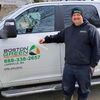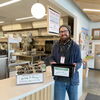Processing Your Payment
Please do not leave this page until complete. This can take a few moments.
- News
-
Editions
-
- Lists
-
Viewpoints
-
Our Events
-
Event Info
- Women's Leadership Forum 2025
- On the Road with Mainebiz in Bethel
- Health Care Forum 2025
- On The Road with Mainebiz in Greenville
- On The Road with Mainebiz in Waterville
- Small Business Forum 2025
- Outstanding Women in Business Reception 2025
- On The Road with Mainebiz in Bath
- 60 Ideas in 60 Minutes Portland 2025
- 40 Under 40 Awards Reception 2025
- On The Road with Mainebiz in Lewiston / Auburn
- 60 Ideas in 60 Minutes Bangor 2025
Award Honorees
- 2025 Business Leaders of the Year
- 2024 Women to Watch Honorees
- 2024 Business Leaders of the Year
- 2023 NextUp: 40 Under 40 Honorees
- 2023 Women to Watch Honorees
- 2023 Business Leaders of the Year
- 2022 NextUp: 40 Under 40 Honorees
- 2022 Women to Watch Honorees
- 2022 Business Leaders of the Year
-
-
Calendar
-
Biz Marketplace
- News
- Editions
- Lists
- Viewpoints
-
Our Events
Event Info
- View all Events
- Women's Leadership Forum 2025
- On the Road with Mainebiz in Bethel
- Health Care Forum 2025
- On The Road with Mainebiz in Greenville
- On The Road with Mainebiz in Waterville
- + More
Award Honorees
- 2025 Business Leaders of the Year
- 2024 Women to Watch Honorees
- 2024 Business Leaders of the Year
- 2023 NextUp: 40 Under 40 Honorees
- 2023 Women to Watch Honorees
- 2023 Business Leaders of the Year
- + More
- 2022 NextUp: 40 Under 40 Honorees
- 2022 Women to Watch Honorees
- 2022 Business Leaders of the Year
- Nomination Forms
- Calendar
- Biz Marketplace
Ramunas Stepanauskas probes the secrets of life deep inside Earth
 PHOTo / Tim Greenway
PHOTo / Tim Greenway
When it comes to taking on a seemingly impossible challenge, Ramunas Stepanauskas doesn't shirk, but instead throws himself at it.
A senior research scientist and director of the Bigelow Laboratory Single Cell Genomics Center in East Boothbay, Stepanauskas studies microbes, the tiny (millions fit into the eye of a needle), single-cell organisms that are our planet's oldest life form and compose most of its matter, including in the human body, oceans and soils. But microbes are tough for scientists to study: some 99% of the ones above Earth's surface and in the oceans will not grow and multiply in a lab dish.
Now multiply that problem: Stepanauskas, in collaboration with universities and companies, is coordinating a project that is searching as far as two-and-one-half miles below the planet's surface to find and study microbes that have never been exposed to oxygen.
The goal is to find, retrieve and study these so-called anaerobic microbes. He's managed to conduct enough preliminary studies to convince the National Science Foundation of the project's merit. He recently led the effort to raise $1.8 million from NSF, $1.4 million of which will stay within Bigelow. The other $400,000 will go to collaborators.
An answer to how life began?
It's the first of NSF's Genealogy of Life grants for a program that aims to collect and analyze massive amounts of data — so-called “big data” — to reconstruct the evolutionary relationships of species.
Stepanauskas and his colleagues are focusing on untangling the deep genealogy of “microbial dark matter” deep inside Earth using technology developed at Bigelow, called single-cell genomics. He says that even if he takes samples of microbes from the Damariscotta River, which flows by Bigelow's campus, most won't grow in the lab.
“This project will address this long-standing challenge via bypassing the need for cultivation of microbial dark matter and will directly interrogate its DNA blueprints by employing a novel research technology, single-cell genomics,” he notes, saying no one has ever seen these microbes. “We're looking for the unknown.” DNA, or deoxyribonucleic acid, is the set of basic genetic instructions in all living organisms.
“How life began, evolved and established itself on Earth remains a mystery,” he adds. “Sequencing the DNA of contemporary life has become a powerful tool that is unlocking some of the secrets by allowing scientists to reconstruct the genealogy of distant ancestors. However, this approach had a major challenge in that many branches of the tree of life are microorganisms that do not grow in laboratory cultures, and therefore their DNA cannot be studied using traditional molecular tools.”
Single-cell genomics also uses the flow cytometry technology Bigelow developed. The researchers will use glycerol, a chemical that essentially freezes the subsurface cells to preserve them. Then it will use its technologies to separate each sample of microbes into an individual cell, copy the DNA of that cell, amplify it to get billions of copies, and then determine its genetic sequence, which is then studied to determine the cell's nature and potential applications.
“After sequencing and looking at the genomes of thousands of individual cells [in microbes found in rivers and other water], we haven't found two that are identical,” he says. “That makes things complicated.”
Stepanauskas says the new grant is for basic research, but the results potentially could be applied in the biotechnology industry, for example, to improve research methods, to better understand metabolic pathways and for new drug development. He says Bigelow has collaborations with several biotech companies looking for new solutions in genetic research, but per agreements he is not allowed to give out the names of those partners.
Paying his own way
Bigelow expects each of its 16 researchers to raise an average of $400,000 in grants annually. It's a time-consuming task to set up test projects, sometimes with collaborators outside of Bigelow, to improve the chances of getting a grant approved.
It's not easy given the flat or decreased federal budget for research. The result: researchers like Stepanauskas spend more time writing grant proposals.
“Proposals take a lot of time and effort,” he says of setting up the initial experiments and getting the data needed to convince funders, and then later to find and hire personnel, and then extract and analyze the data. “It's a continuum.” One teaspoon of sea water alone can contain one million microbes and generate 1 terabyte (a trillion bytes) of data.
But it's something Stepanauskas says is a necessary part of scientific research. And he's good at it. In addition to the recent $1.8 million grant, which runs from 2014 to 2018, he raised close to $2.2 million in four other NSF grants that started in the past three years, plus more from the Department of Energy, NASA and the Sloan Foundation. Sloan provided $150,000 for the initial research to generate data that helped him pull in the large NSF grant.
In addition to managing and conducting research, Stepanauskas directs the lab's Single Cell Genomics Center, which provides services for both Bigelow scientists and those in more than 100 universities, research institutes and companies around the world. It generates about $1 million in revenue a year for Bigelow.
That also involves industry partnerships where Bigelow is testing novel chemicals to optimize its single-cell technology. “We will be able to obtain higher quality data at lower cost,” he says.
When he's not in the lab exploring places where no one has gone before, Lithuania-born Stepanauskas likes to explore Maine with his family by hiking, skiing, bicycling and canoeing.
Read more
G·O Logic's Matt O'Malia and Alan Gibson quietly stage a 'passive house' revolution
Janine Cary waves the flag to take Maine products global
Dan Kerluke skates his sports analytics startup into NHL territory
Garbage to Garden is 'a for-profit with a mission'
Ryan Jackson's outsourcing services aim to improve how companies operate
Ducktrap River of Maine's sales double under Don Cynewski's leadership
Chris Thompson moving on Portland waterfront development
Organic ingredients, organic growth for Bixby chocolate bars
G·O Logic's Matt O'Malia and Alan Gibson quietly stage a 'passive house' revolution
Janine Cary waves the flag to take Maine products global
Dan Kerluke skates his sports analytics startup into NHL territory
Garbage to Garden is 'a for-profit with a mission'
Ryan Jackson's outsourcing services aim to improve how companies operate
Ducktrap River of Maine's sales double under Don Cynewski's leadership
Chris Thompson moving on Portland waterfront development
Organic ingredients, organic growth for Bixby chocolate bars
Ramunas Stepanauskas
Senior research scientist and director Bigelow Laboratory Single Cell Genomics Center, East Boothbay
Bigelow Laboratory for Ocean Sciences









Comments